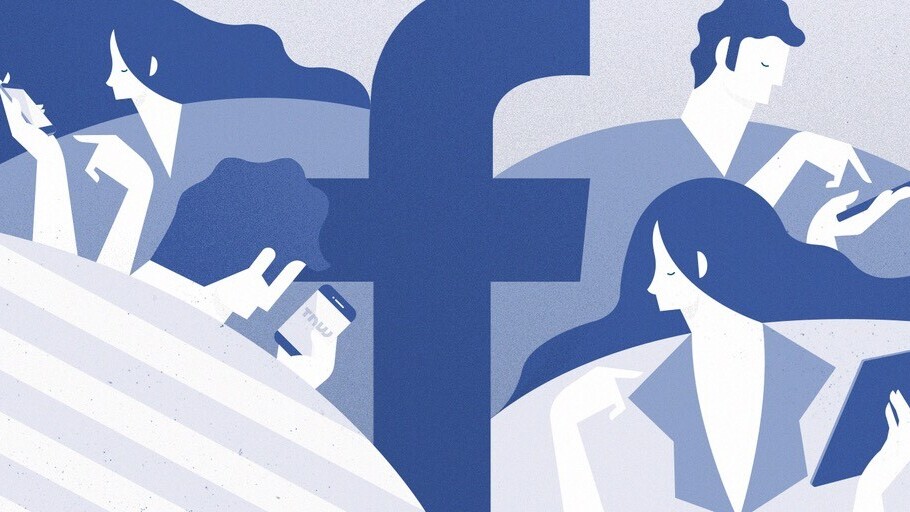
The publishing business has been in a tailspin for years as scores of print publications have shriveled and folded. Numerous publications have sought to survive by going digital, but this strategy has not panned out for many media companies because their primary source of revenues, digital advertising, has been siphoned off by Google and Facebook.
There’s no doubt that publishers and media companies need to take drastic measures as Facebook and Google continue to dominate the digital ad industry. Based on data from the Interactive Advertising Bureau (IAB) and Google’s and Facebook’s publicly reported numbers, Google and Facebook accounted for all the growth in the U.S. digital ad industry in the first half of 2016, while the rest of the industry appeared to shrink. Together, Google and Facebook accounted for more than 90 percent of the ad market’s year-over-year growth in 2016.
Too little, too late
Publishers are increasingly disenchanted with the poor ROI they are getting after tap-dancing around changing requirements for Facebook and other social media giants. Recognizing the disenchantment within the publishing community over ad revenues, Google and Facebook have extended an olive branch in the form of new subscription tools to help publishers establish subscription models.
However, publishers and media increasingly are realizing that it’s do-or-die time in terms of preserving and monetizing their relationships with their audience, boosting the integrity of their brands, and recapturing control over not only the content they create, but the full lifecycle of the content.
Darwinian forces at work
The Internet has proven to be the natural predator of old-school publishers, first undermining their print businesses, then gobbling up their ad revenues when they went digital. We continue to witness a form of Darwinian evolution at play in which only the fittest publishers survive.
As Collin Morrison points out, deep-pocketed print empires like Hearst, News Corp., Axel Springer, and The New York Times have been able to transform their businesses through savvy digital maneuvers and investments. Others have not been so lucky, as the sad industry numbers show.
The shakeout in the publishing industry is similar to what is occurring in the retail industry, which is undergoing what many are calling a “retail apocalypse” in which the department store model is being displaced by more nimble digital competitors that can leverage technology. The retail/publishing analogy is not so far-fetched when we consider that Amazon founder Jeff Bezos bought a fading Washington Post for $250 million and has been actively transforming the publication into a viable digital entity.
The Bezos Effect
As Morrison points out, Bezos is “the man whose fusion of e-commerce and content has arguably redefined not just retailing but also media.” Bezos is known for relentless testing and experimentation, and he has brought this philosophy to the Washington Post, which he is turning topsy-turvy with new ideas and processes.
At the Post, Bezos is leveraging Amazon’s digital publishing technology similar to the way he repurposed Amazon’s own cloud technology to form Amazon Web Service. Among the strategies Bezos is employing is the use of streaming video to bridge his two main business interests, e-commerce and content publishing.
Bezos sees streaming video as a major differentiator and revenue generator. After forming Prime Video, he created Amazon Studios, which he said could be the “fourth pillar” of Amazon’s entire business (after retail, Prime as a whole, and Amazon Web Services). Analysts estimate that Amazon has spent $2 billion on video content for Prime. This is in addition to the $970 million he spent to purchase the live game streaming company Twitch.
Streaming video the next big revenue stream
Live streaming video has been called the next big thing by many observers. Seeing the huge revenue potential of live video, Facebook, Instagram, Twitter, and Snapchat have invested millions in establishing streaming video platforms on their services.
Rather than letting the major social media services dominate the next wave of streaming video ad revenues, as happened in the first wave of digital publishing, publishers should take their cue from Bezos and take control by establishing their own streaming platforms and channels.
One company riding the rising wave of streaming video is Cheddar, a burgeoning media company and publisher that provides “ambient” or “window on the world” live streaming content, up to nearly one million live views per day. Cheddar subscribers pay $2.99 a month for content unique to the Cheddar brand, and access to exclusive interviews and the full Cheddar archive.
The informal and in-the-moment style of Cheddar appeals to the under-35 demographic, who like being along for the ride, with their feedback and questions often incorporated live into Cheddar shows, which also air through Facebook Live and Twitter live feeds.
Other publishers can stand out similarly by forging live video channels and adding live video to their content mix. As research shows, viewers watch live video three times longer than pre-recorded video and comment far more than with pre-recorded streams.
Live video shines
A prime example of live video’s appeal is seen in The New York Times, which last year posted 1,417 Live videos to its main Facebook page — considerably more than the 1,244 regular videos posted during the same period. The engagement metric through which those Live videos typically outperformed regular ones was “comments.” Live videos accrued an average of 1,011 comments, double the average of 536 on regular videos.
For this reason, soliciting engagement through comments has become a bigger part of publishers’ live streaming strategies. By putting calls to action into live streams, they can encourage viewers to leave comments or questions for journalists, interviewees, celebrities, and others, or even crowdsource, as the NY Times found when crowdsourcing answers to its popular crossword puzzle.
Rather than relying solely on producing costly Facebook-exclusive Live videos, the benefits of which are hard to quantify, publishers can create tangible benefits for their brands and subscription bases by doing more from their own platforms.
Bringing it back “home”
The status quo in advertising and social promotional strategies clearly is not working. Increasingly, publishers are coming to realize what Mashable chief content officer Gregory Gittrich pointed out at Web Summit 2016 when he said, “Social media dilutes your brand. Publishing direct content on social media, over time, negatively impacts your brand integrity.”
And many publishers are taking heed. The Guardian, for example, in one year notched up 200,000 paying members, and more than 100,000 one-off donations, which analysts estimate could amount to $77 million per year if the Guardian gets people to pay for the minimum subscription per year.
Following suit are BBC News, National Geographic, The Wall Street Journal, The New York Times, and others that are investing in their own platforms, building them out as trusted environments in which deeper relationships can be built through high-quality content only they have the resources and expertise to offer, including powerful nuanced stories and meaningful, entertaining videos.
Publishers need to realize the public is tiring of commoditized non-quality content. They are willing to subscribe to, and pay for, niche content that appeals to their preferences and interests, not only in terms of the material, but mobility, locations, and devices as well.
Publishers that license their unique platforms and redistribute their distinct content from their own ecosystems can increasingly monetize what only they possess: the resources and expertise to go beyond the low-quality, over-sensationalized content that is ubiquitous on the larger brands’ platforms, to more personalized, targeted, and dynamic content in which user participation and action are encouraged.
This is the perfect time for publishers to take control of their platforms and the video streams that will drive the next phase of the digital content revolution. With advances in live video programming and the speed with which original content can be created, publishers can greatly enhance what they already do and know, and monetize it through changes in advertising models that fuel online media platforms as well as live-streaming video platforms.
Apps like Periscope and Facebook Live should inspire publishers to do new things, as opposed to trapping them by putting them in a prostrate position to Facebook and other social giants.
Get the TNW newsletter
Get the most important tech news in your inbox each week.




